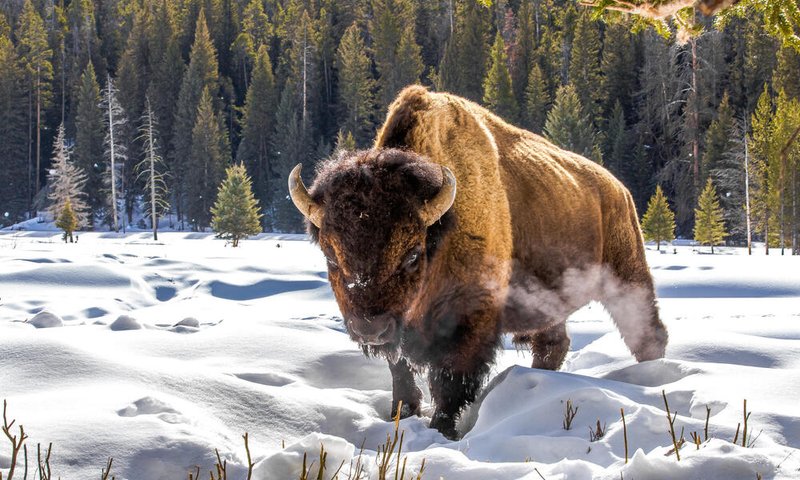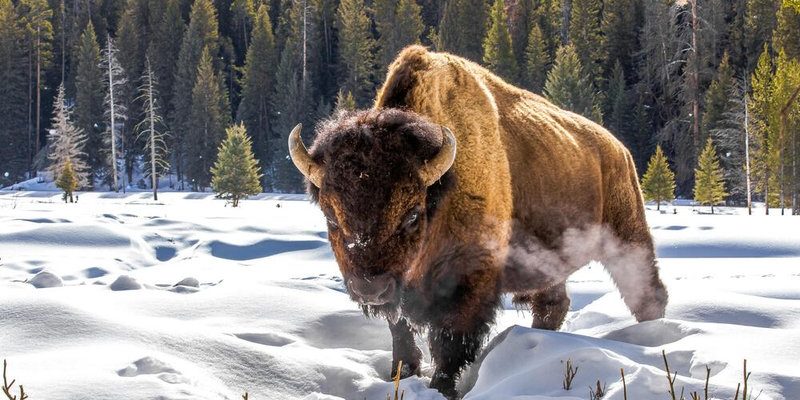
Bison once roamed the continent in staggering numbers, but thanks to hunting and habitat loss, their population dwindled to near extinction. Today, while they are no longer on the brink, their conservation status remains a hot topic of discussion. This article will take a deep dive into the world of the American bison, exploring their history, current status, conservation efforts, and what we can learn from their plight.
The Rich History of American Bison
Before diving into the present status of the American bison, it’s essential to recognize their historical significance. For thousands of years, these magnificent animals were a vital resource for Indigenous peoples across North America. They provided food, clothing, and materials for shelters. Think of them as a lifeline for many communities, intricately woven into the fabric of cultural identities.
However, the late 19th century saw a drastic decline in bison populations. Overhunting, particularly driven by westward expansion and commercial hunting, led to near extinction. By the year 1889, estimates suggested that only around 1,000 bison remained. It’s staggering to think that such a powerful symbol of North America was brought to its knees through human actions.
In response to this decline, conservationists and early wildlife advocates stepped in. The establishment of parks and reserves, like Yellowstone National Park in 1872, aimed to protect these animals in their natural habitat. This marked the beginning of efforts to rebuild their populations, albeit a challenging journey.
Current Status of American Bison
As of today, the American bison is classified as near threatened by the IUCN Red List. While they are not technically endangered, the term “near threatened” indicates that they still face significant risks. You might be curious about how many bison are left. Currently, estimates suggest that there are about 500,000 bison in North America, but most of these are in commercial herds.
Despite this, the situation is better than it once was. Conservation programs have helped increase wild bison numbers. Protected areas and wildlife corridors allow these animals to roam freely and sustainably. However, it’s not just about numbers—we also need to consider genetic diversity. Many bison today are hybrids due to interbreeding with cattle, which can dilute their genetic traits.
Recognizing their status is crucial. While there’s a glimmer of hope with population recovery, it raises important questions about the balance between conservation efforts and the impacts of climate change, urbanization, and agricultural practices.
Conservation Efforts: Protecting the Bison
There are numerous organizations and initiatives dedicated to the conservation of the American bison. Groups like the Wildlife Conservation Society and the National Bison Association work tirelessly to ensure that bison populations are maintained and protected. Their efforts involve habitat preservation, education initiatives, and breeding programs.
One fascinating approach to conservation is rewilding. This concept involves reintroducing bison to their historical ranges, which not only benefits the bison but also encourages healthy ecosystems. Think of bison as nature’s lawnmowers; they graze on grasslands, helping to maintain the health of these habitats.
Additionally, many Native tribes are playing a vital role in bison conservation. By restoring herds on tribal lands, Indigenous communities are not only reviving their cultural heritage but also contributing to the overall population recovery. It’s a powerful example of how traditional knowledge and modern conservation methods can work hand in hand.
The Role of Policy and Legislation
Conservation efforts for the bison are also supported by various policies and legislation. The Lacey Act and other wildlife protection laws serve to regulate hunting and protect habitats. Understanding these laws helps us recognize the broader context of bison conservation.
Moreover, state and federal governments have been working together to promote partnerships that focus on bison restoration. For example, the Bison Conservation Initiative aims to enhance the health of bison populations and their habitats through collaborative efforts across various agencies. This interconnected effort shows how important teamwork is in conservation.
Educational outreach is equally vital—raising awareness about bison’s historical and ecological importance is crucial for garnering public support. When people understand what’s at stake, they’re more likely to advocate for policy changes that benefit bison and their ecosystems.
The Impact of Climate Change
Climate change poses a significant threat to the American bison and their habitat. Rising temperatures and changing precipitation patterns can alter the delicate ecosystems that bison depend on. For instance, droughts can affect grassland health, limiting food sources for these animals.
You might be surprised to learn that bison are quite adaptable, but their ability to thrive is only as strong as the ecosystems they inhabit. Additionally, extreme weather events can disrupt migration patterns and cause stress on already vulnerable populations.
Conservationists are working to mitigate these effects by promoting *sustainable land management practices* and restoring ecosystems. It’s an uphill battle, but one that emphasizes the interconnectedness of all species, including humans.
What Can You Do to Help?
While large-scale conservation efforts are vital, there are also steps individuals can take to support American bison conservation. Here are some ways you can make a difference:
- Support Conservation Organizations: Donating or volunteering with groups that focus on bison conservation can make a direct impact.
- Educate Others: Share what you learn about bison and conservation efforts with friends and family. The more people know, the more likely they are to care.
- Visit National Parks: Explore parks that support bison populations, like Yellowstone. Responsible tourism can help fund preservation efforts.
- Advocate for Sustainable Practices: Support policies aimed at habitat protection and sustainable agriculture. Your voice matters!
Every action counts, no matter how small. By getting involved, you become part of a larger effort to ensure the survival of the American bison.
In summary, the American bison’s story is one of resilience, hope, and ongoing challenge. While they’ve made a significant recovery since their near extinction, the battle for their survival continues. Their status as near threatened serves as a constant reminder of the ongoing impact humans can have on wildlife.
Conservation efforts are crucial for maintaining bison populations and restoring their ecosystems. The collaboration between Indigenous communities, conservation organizations, and government agencies paints a hopeful picture of what’s possible. We all have a role to play in this story. By being informed and taking action, we can help protect these iconic creatures for generations to come.

